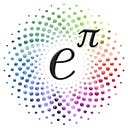The Smallest vs the Most Common Photon
In my previous article, “Protons and Electrons Are Made of Planck Spheres,” I presented evidence for a minimum photon wavelength. Essentially, if an electron has an intrinsic toroidal motion with its Compton wavelength as its circumference, then according to the PSU model, for the Planck spheres on the surface of this torus to have a total mass equal to the electron’s rest mass, its thickness (2πr) must be about 2.0 x 10^-21 m. Because photons are quantized, the wavelength of a photon must therefore be larger than this in order for it to be transmitted by an electron. It turns out that the smallest photon wavelength ever detected is about 2.75 x 10^-21 m, so the proposed electron model and its predicted photon limit is in extremely close agreement with observations.
In discovering this photon limit, I was curious as to how it relates to the most ubiquitous photon wavelengths — the cosmic microwave background. Most of the space in the universe consists of photons with a wavelength near 1 mm. Although the CMB peak λb consists of a broader set of wavelengths than the highly specific electron Compton wavelength λe and minimum photon wavelength λ0, we can nevertheless obtain an approximation of λb through a simple relation:
The ratio of the CMB peak to the electron Compton wavelength is similar to the ratio of the electron Compton wavelength to the minimum photon wavelength. Recall that λe is the circumference of the electron torus and λ0 is its thickness. The approximation is best visualized alongside the spectrum of the CMB.
It’s clear that λe²/λ0, which is about 3 mm, does not line up with the absolute peak intensity near 1 mm. But also, among the complete range of possible values, this is remarkably close. If it’s a coincidence then it’s one at least worth noting, but I suspect there’s more to it than that. If the electron has toroidal geometry, then we should expect the ratio of its circumference and thickness to have relevance beyond just the dimensions of the electron. Indeed we find that in proportional terms, the minimum photon wavelength and the most common photon wavelength are nearly equidistant from the electron’s Compton wavelength. I don’t yet know why that is, or why the peak wavelength is about 1/3 shorter than λe²/λ0, but I will certainly have this relationship in mind as I continue to explore the implications of λ0, and if you’re interested in understanding the universe as it really is, so should you.
